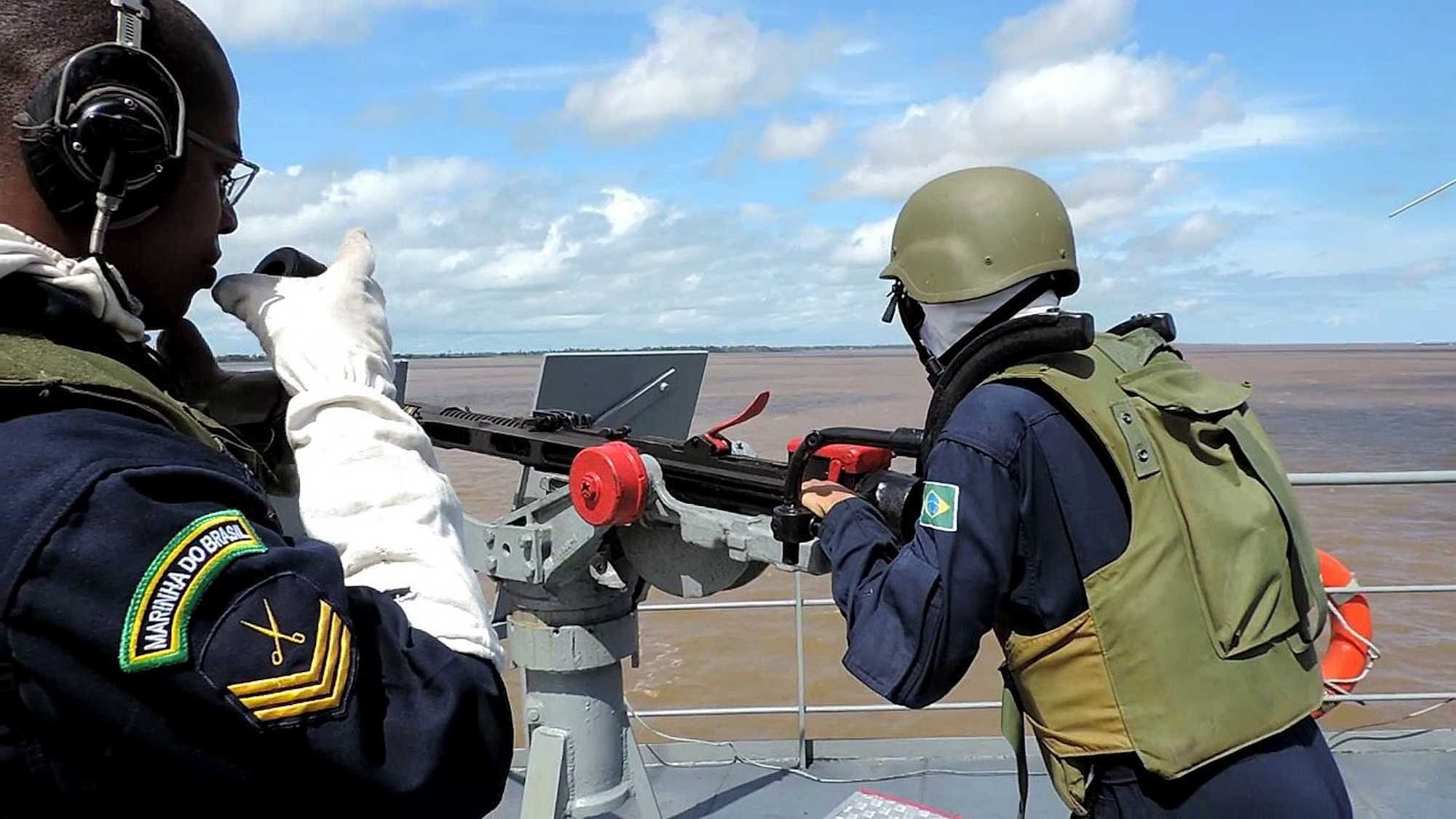The currents and high flood levels in the rivers of the Amazon, not to mention the type and the lay of the river banks, the presence of natural floating or underwater barriers, poisonous animals, and tropical diseases, are some of the aspects that the Brazilian Navy takes into account to operate in that region.
“All of this can restrict mobility for our naval forces in river channels, as well as requiring additional planning measures, vaccinations, and first-aid training,” stated Lieutenant Colonel Robson Clair da Silva, the commander of the 2nd Riverine Operations Battalion, a unit under the 4th Naval District Command.
To keep its troops ready to operate in this environment, the 4th and 9th Naval District Commands conduct Operation Ribeirex annually. Together, both units cover nearly all of the states in northern Brazil, with the exception of Tocantins, and two states in the northeast (Maranhão and Piauí).
In 2017, the operation took place in locations close to the city of Santarém in the state of Pará, with 2,250 service members from the two commands participating, 200 of whom were marines from the 2nd Riverine Operations Battalion located in Belém, state of Pará.
In the first phase of the exercise, carried out from April 25th to 27th, the goal was to deploy the marines, who departed Belém for Santarém, in addition to the deployment of eight ships also participating in the training.
While in transit to the area of operations, the crew performed onboard activities such as firefighting, overseeing ship repairs, and navigational studies.
“The navigational training is aimed at familiarizing the officers with the navigational peculiarities of the rivers in the Amazon, which are powerful and have banks that shift quite frequently,” explained Captain Ricardo Jaques Ferreira, the commander of the Northern Naval Patrol Group, a unit under the 4th Naval District Command.
During this period, some exercises were still being conducted, including the launch of support vessels that would be used in the second phase of Ribeirex.
“The goal of the entire first phase was to elevate the level of vessel training to operate in working groups, in order to increase their efficiency during the second phase of the operation, when the riverine operation was carried out,” Capt. Ferreira said.
River Landing
The second phase of the operation, which ran from April 28th to May 1st, had two focuses: an exercise in river landings and the control of traffic on the Amazon River.
Upon landing, the marine troops left the ships to advance towards an area on the river bank, aiming to secure that space and to maintain certain objectives for each participating group.
“This activity requires a high degree of coordination, control, and speed in order to execute it safely and effectively,” Lt. Col. Clair explained.
During the exercise, the service members also faced the challenge of simulating a so-called “casualty evacuation,” having to be aware of first-aid procedures and having to take each participant who had been “hit” to the best-equipped healthcare facilities.
The point chosen for the riverine operation was the area where the river enters the Great Lake of Curuai, a lake with muddy waters like those of the Amazon River, to which it is connected, north of Santarém.
“This area of operations was chosen because of the natural features of the region, considering the high flood level of the Amazon River,” Capt. Ferreira said.
In addition to the ships, an Esquilo (UH-12) helicopter from the Navy’s 3rd Helicopter Squadron was employed to support the operation. “The union between the troops and the resources of both commands led to increased interoperability and to a mutual understanding of their capacities and limitations in operations,” Capt. Ferreira assessed.
Lt. Col. Clair also considered the results of the 2017 edition of Operation Ribeirex to be positive. “I consider the operation to have been successful since it was possible to keep the Navy’s troop training in the Amazon region at a high level of readiness without any incident that would have compromised the safety of the personnel or equipment.” He added that “it was also important to have the marines experience the characteristics of our Amazon.”
Controlling river traffic is the responsibility of the Navy, charged with promoting the safety of navigation, preventing water pollution, and protecting those who use the waters in their daily lives; operations that become more complex due to the features of the Amazon.
The length of the Amazon River is one of the factors, according to Capt. Ferreira. He also commented on the existence of holes and lakes in the region, a fact that requires service members to diversify the ways in which they control river traffic, trying out new operational strategies and expanding the presence and capacity of the Navy.
In general, operations like Ribeirex are guided by a constitutional decision. “The Armed Forces, in accordance with Article 142 of the Federal Constitution of 1988, is dedicated to the defense of the homeland, to preserving constitutional powers and, by the initiative of any of those powers, maintaining law and order,” Lt. Col. Clair affirmed.
“For the defense of the homeland, the Armed Forces need to be well trained and to have credibility in putting their training to use, being able to operate rapidly and successfully against acts of aggression.
“As such, it is only with ongoing training, which is achieved through in-service training and in operations such as Ribeirex, that it is possible to carry out our constitutional role and dissuade a domestic or external threat,” Lt. Col. Clair concluded.
This article appeared originally in Diálogo – https://dialogo-americas.com/en/home

